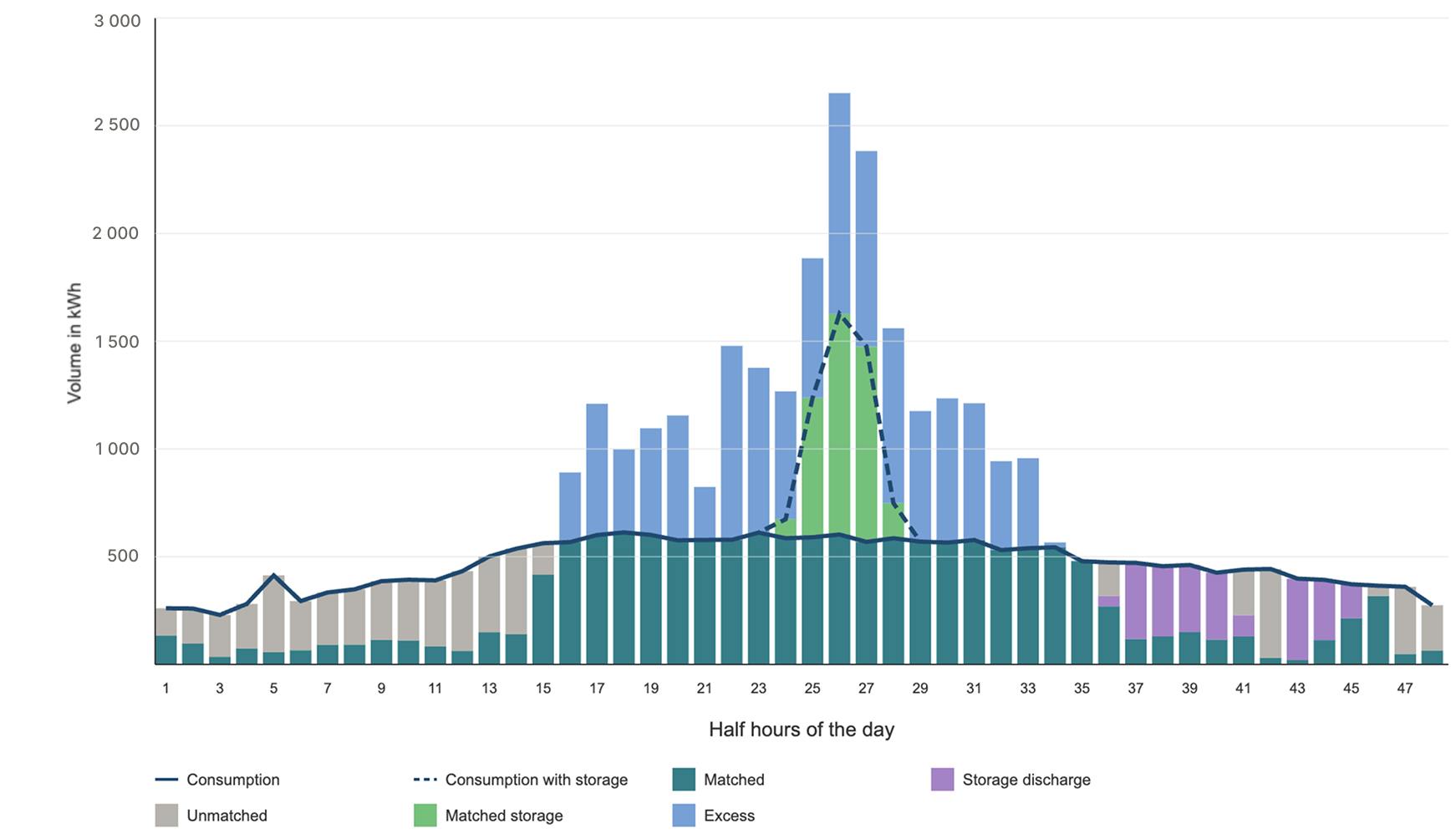Insight · 27 May 2025
Storage for everyone: how to scale hourly matching scores
By aiming to increase hourly matching scores, energy suppliers and consumers create new price signals for storage operators, accelerating the rollout of new storage assets. Today, we're publishing our methodology to use storage for hourly matching claims.

At Granular Energy, we help energy suppliers provide more transparency to the end-consumers. We’ve now helped dozens of electricity suppliers launch “traceable” offers in which end-consumers can see how well they are matched with renewable energy on an hourly basis. Depending on energy suppliers and tariffs, consumers usually end up with an ‘hourly matching score’ between 60 and 90%, which brings the question of ‘what can be done to increase this?’. This is actually the right question to ask, as the whole premise of hourly matching is for consumers to realise that they are not 100% supplied by renewables, and work towards increasing their hourly matching score, which in turns will bring new generation assets, storage and DSR to the grid. One of the ways to increase the hourly matching score is to use energy storage, and this will be the topic of today’s article. We’ll also cover trading of REGOs including hourly metering data as another way to maximise hourly matching score very shortly!
Storage for everyone
In theory, it's straightforward: renewable energy is stored when abundant and released when scarce. In practice, you need to take into account losses, decide which energy (is it from wind farm X or solar farm Y) is released first from the storage asset, ensure auditability, and also make sure this methodology can scale. As for everything else we do at Granular Energy, the aim is not to allow a handful of very large buyers to benefit from this, but to allow everyone to increase their hourly matching score through the use of energy storage.
The methodology
We’re publishing today our methodology to use storage for hourly matching claims. This methodology has a few specificities dedicated to the UK, but can be adapted to other countries. It has been reviewed by a dozen third parties, including energy suppliers, auditors and associations, and has been trialled with actual storage assets and consumers in the UK. This is now available to any energy supplier in the UK, and hence to any end-consumer.

Example of the use of storage to increase the matching score of a consumer over a day
What’s next
We can access and process metering data for most energy storage sites in the UK, and we already have agreements with energy storage operators (such as Field) for hundreds of MW of storage. This means electricity suppliers and consumers can now easily increase their hourly matching scores by harnessing the ‘attributes’ of battery storage, something not previously possible. The point of this is that energy suppliers and consumers can create new price signals for storage operators, accelerating the rollout of new storage assets. We are particularly excited by the potential benefits for long duration energy storage, for which there are few revenue streams today, given that power markets don’t distinguish between carbon-free assets and fossil-based assets such as gas turbines.
If you’d like to get involved, either as a consumer, energy supplier or storage operator - please get in touch!
Share article